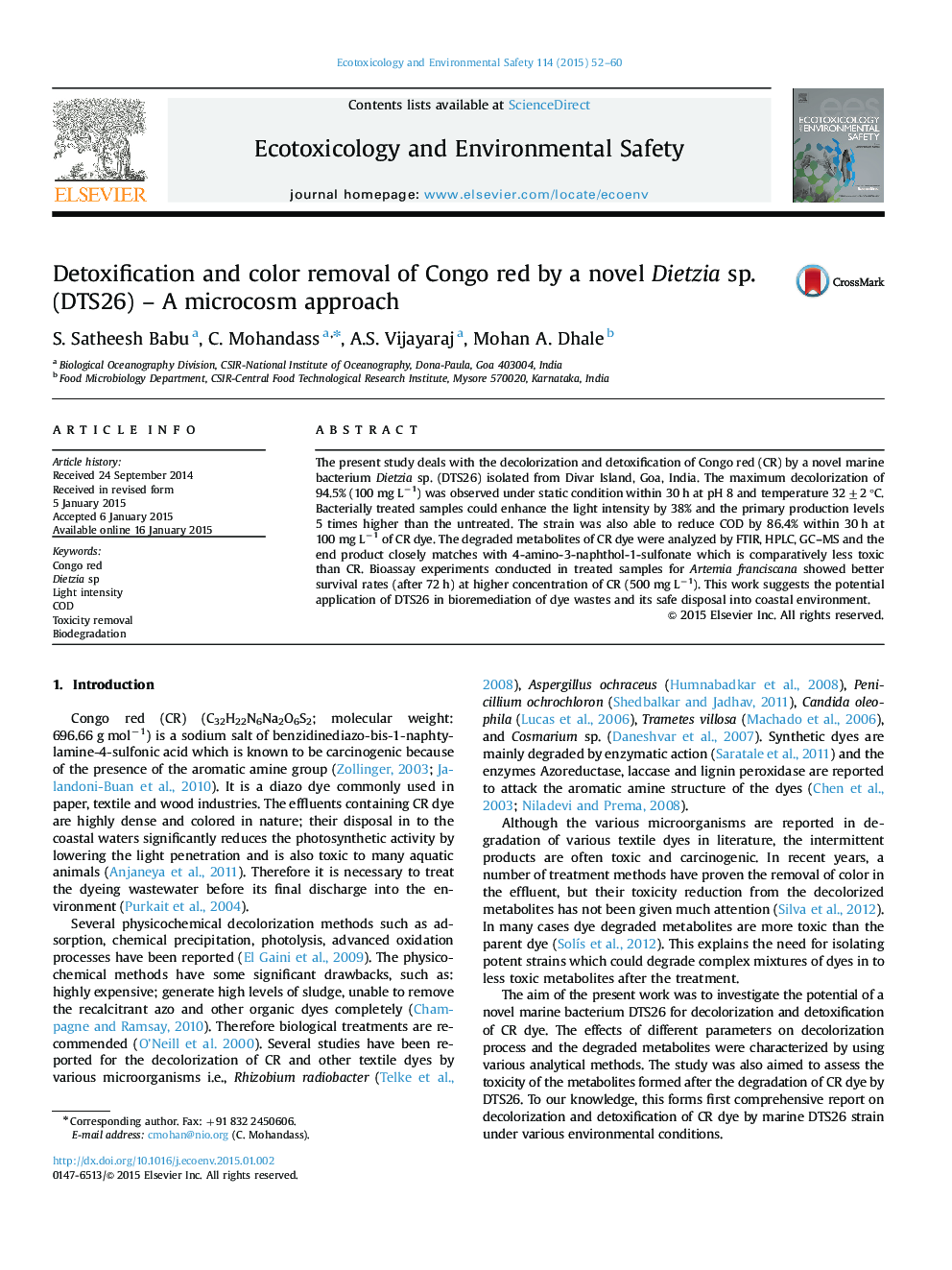| Article ID | Journal | Published Year | Pages | File Type |
|---|---|---|---|---|
| 4419838 | Ecotoxicology and Environmental Safety | 2015 | 9 Pages |
•A novel bacterium Dietzia sp. (DTS26) isolated and characterized for dye degradation.•The light intensity and primary productivity levels were increased in treated dye.•Bioassay on Artemia sp. showed less toxic nature of degraded metabolites.•Degradation mechanisms were demonstrated using UV–vis, FTIR, HPLC and GC–MS.
The present study deals with the decolorization and detoxification of Congo red (CR) by a novel marine bacterium Dietzia sp. (DTS26) isolated from Divar Island, Goa, India. The maximum decolorization of 94.5% (100 mg L−1) was observed under static condition within 30 h at pH 8 and temperature 32±2 °C. Bacterially treated samples could enhance the light intensity by 38% and the primary production levels 5 times higher than the untreated. The strain was also able to reduce COD by 86.4% within 30 h at 100 mg L−1 of CR dye. The degraded metabolites of CR dye were analyzed by FTIR, HPLC, GC–MS and the end product closely matches with 4-amino-3-naphthol-1-sulfonate which is comparatively less toxic than CR. Bioassay experiments conducted in treated samples for Artemia franciscana showed better survival rates (after 72 h) at higher concentration of CR (500 mg L−1). This work suggests the potential application of DTS26 in bioremediation of dye wastes and its safe disposal into coastal environment.
